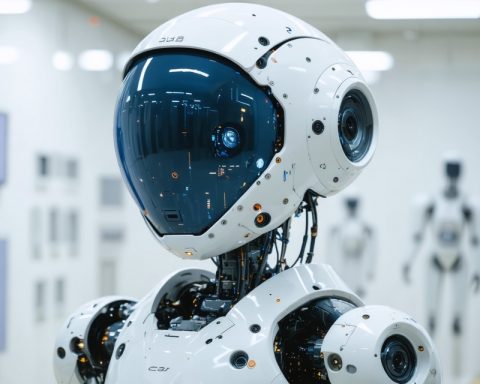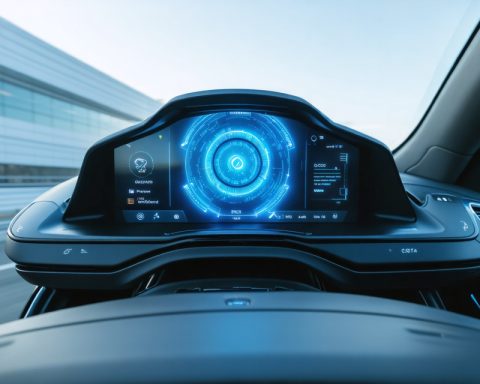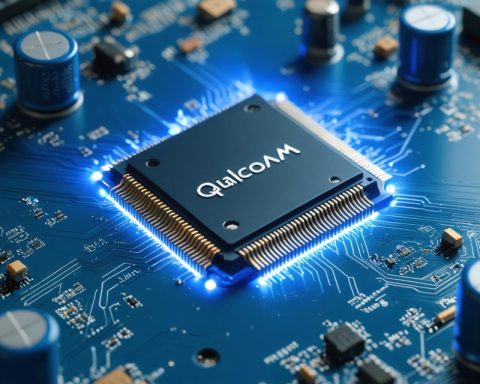- Meta is entering the AI-powered humanoid robot space, driven by Mark Zuckerberg’s vision and led by the Reality Labs hardware division.
- The initiative involves creating sophisticated robot hardware through collaboration with companies like Unitree Robotics and Figure AI.
- Although Meta does not plan to launch a Meta-branded robot initially, future developments remain a possibility.
- Marc Whitten, with experience in autonomous vehicles, will oversee this ambitious project.
- With a $65 billion investment, Meta aims to establish an ecosystem for AI and robotics, similar to Google with Android.
- Meta’s endeavor parallels similar efforts by Apple and Google in the humanoid robotics field.
- The company’s ultimate goal is to pave the way for ubiquitous household robots, signaling the future of AI innovation.
Silicon Valley’s dance with the future takes a striking turn as Meta steps onto the AI stage, determined to carve its place in the humanoid robot race. Following the buzz of innovation led by tech mavericks, Meta, under Mark Zuckerberg’s vision, readies for a major expedition into the realm of AI-powered humanoid robotics. The company’s Reality Labs hardware division gathers momentum, assembling a dedicated team to give life to this audacious ambition.
Imagining a not-so-distant world where intelligent robots handle household chores, Meta’s quest begins with crafting its own sophisticated robot hardware. Amid collaborations with innovators like Unitree Robotics and Figure AI, Meta envisions a landscape where its AI, sensors, and software empower this robotic generation, setting the stage for others to build and sell.
Interestingly, while the company doesn’t initially plan to roll out a Meta-branded robot, the possibility glimmers on the horizon. This movement echoes similar pursuits by industry giants such as Apple and Google, each nurturing their own robotic aspirations. Adding intrigue to Meta’s trajectory is the leadership of Marc Whitten, a veteran with ties to autonomous vehicles, poised to lead this venture.
With $65 billion set aside for related technological advancements, Meta imagines laying the groundwork as Google did with Android or Qualcomm with its processors, fostering an ecosystem where humanoid robots become as ubiquitous as smartphones. Amidst this technological chorus, Meta emerges with an emphatic message: the next leap in AI is under construction, and the future beckons with promising possibilities.
The Future of AI-Powered Robots: How Meta’s Ambitions Could Transform Our Lives
How-To Steps & Life Hacks in AI-Powered Robotics
Harnessing AI for robotics involves several intricate steps, but anyone interested in the field can begin by exploring open-source platforms like TensorFlow or PyTorch to develop basic AI algorithms. Building a simple robot can also start with platforms like Arduino or Raspberry Pi, facilitating experimentation with sensors and movement controls. For those looking to take their interest further, online courses from providers such as Coursera or edX offer in-depth tutorials on machine learning and robotics.
Real-World Use Cases
AI-powered humanoid robots have the potential to transform sectors such as:
1. Healthcare: Robots assist with patient care, surgery, and administrative tasks, improving efficiency and accessibility.
2. Manufacturing: Robotics enhance production line accuracy, speed, and safety, reducing human error and workplace accidents.
3. Domestic Assistance: As envisioned by Meta, household robots could handle everyday tasks such as cleaning and cooking.
Market Forecasts & Industry Trends
The humanoid robot market is anticipated to grow significantly. According to Grand View Research, the global humanoid robot market size was valued at approximately $1.4 billion in 2020 and is expected to expand at a compound annual growth rate (CAGR) of over 37% from 2021 to 2028. The surge is driven by advancements in AI, machine learning, and sensor technologies.
Reviews & Comparisons
While Meta is entering a competitive market with companies like Boston Dynamics and Honda already showing progress, its focus on creating a foundational ecosystem could distinguish it. Comparatively, established companies provide specialized robots (e.g., ASIMO by Honda), whereas Meta aims to empower a wide range of applications through open platform development.
Controversies & Limitations
Ethical and security concerns around AI and robots persist. The possibility of privacy invasions through continuous data collection, alongside debates on employment as automation rises, presents pivotal challenges. Ensuring robots function ethically within human-centric environments remains a significant hurdle.
Features, Specs & Pricing
Meta has not released specifics about its humanoid robot hardware, so pricing models are currently speculative. However, initial offerings may focus on essential features like basic mobility, integrated sensors, and AI capabilities to interpret and interact with environments, similar to current market leaders.
Security & Sustainability
Security in AI robots will be crucial, with manufacturers needing to focus on encryption, secure firmware updates, and access controls. Sustainability can be achieved through energy-efficient robots and using recyclable materials to produce components, reducing technology’s environmental footprint.
Insights & Predictions
Marc Whitten’s leadership suggests Meta’s approach may mimic strategies in the gaming industry, creating engaging and adaptable platforms for developers. Experts predict a growing number of household robots in affluent markets by the late 2020s, moving towards mainstream acceptance as they become more affordable and versatile.
Tutorials & Compatibility
For developers intrigued by Meta’s initiatives, exploring SDKs and APIs for existing AR/VR technologies could be the first step. Meta’s experimental releases and partnerships could integrate compatibility with current smart home ecosystems such as Amazon Alexa or Google Home.
Pros & Cons Overview
Pros:
– Streamlined task automation in homes and workplaces.
– Enhanced convenience in daily life.
– Potential to boost education and job opportunities in AI/robotics.
Cons:
– High initial costs and maintenance.
– Potential privacy concerns and ethical implications.
– Risk of over-reliance on technology.
Actionable Recommendations
1. Stay Informed: Follow industry trends through credible publications like TechCrunch or Wired.
2. Learn the Basics: Begin with foundational AI courses available online to understand core concepts.
3. Engage Early: Experiment with basic robotics kits to gain hands-on experience.
4. Consider Impacts: Reflect on ethical implications and potential societal changes AI robots bring.
For more insights on emerging technologies, visit Meta or Unitree for robotics-specific developments.


















